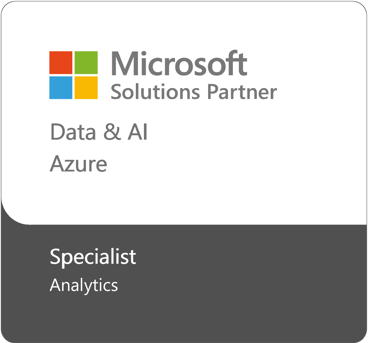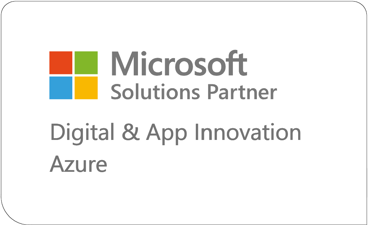The Complete Guide to Context-Driven Personalisation
This is your complete guide to context-driven personalisation. Knowing the context is the most important component in personalising a customer’s experience and overall relationship with a business.

You’ve probably received an email that starts with “Dear Valued Customer” at least once in your life. Words can’t describe how distant that header is in an email, and that’s not the way customers want a business or service to open a relationship with them. Personalisation is always the way to go, and it has already changed the way many businesses communicate with their customers.
What Makes Personalisation Actually Personal?
Here's the thing: personalisation isn't just about inserting someone's name into an email subject line. It’s about understanding a customer’s context, like where they are in their journey, what they actually need right now, and how they prefer to receive information.
Think about it like this: if Jack's company is actively researching CRM solutions and one vendor sends him material about maximising CRM ROI whilst another sends generic customer service tips, which vendor do you think he'll choose? The one who clearly understands his current situation and needs.
The 4 Pillars of Contextual Personalisation
Knowing the context is the most important component in personalising a customer’s experience and overall relationship with a business. Here are four pillars to follow:
1. Know Where Customers are in Their Journey
The customer's journey and where they are in it determines everything. Someone who has just started their research doesn’t need detailed pricing in the same way that someone ready to buy doesn’t need to read introductory blogs.
Always ask these questions yourself:
-
Are they still in discovery mode or already decided?
-
How familiar are they with your service/options?
-
What challenges are they trying to solve with your service/options?
2. Use What You Already Know
Unlike before, customers now leave digital breadcrumbs everywhere. Their website visits, social media interactions, and purchase history tell a valuable pattern that you need to figure out. And gathering these sets of data isn’t the challenge anymore, it’s making sense of it all and using it intelligently.
By intelligently, we mean combining all the behavioural data with explicit information they've shared. Then, look at these patterns across multiple touchpoints. From there, it turns to understanding their preferred communication channels and timing them accordingly.
3. Match Context to Content
Once you figure out where someone is on their journey and what you know about them, you can then deliver the content they really need at that exact moment they need it. And to figure that exact moment and content, consider the following.
-
Timing: When are they likely to respond?
-
Format: Are they more into detailed guides or TLDR posts?
-
Channel: Do they respond more via email, social media, or direct communication?
4. Activate Through Smart Technology
And here's where the magic happens. Modern marketing platforms like Microsoft Dynamics 365 make contextual personalisation scalable. You can set parameters that automatically deliver the content your customer needs based on specific triggers and behaviours. This automated personalisation lets you have:
-
Multi-channel campaigns that adapt as engagement changes
-
Dynamic content that changes based on how customers behave
-
Lead-nurturing sequences that respond depending on what customers choose at each stage of their journey
The Business Impact of Getting Context Right and Making it Work
The benefits definitely talk about an ideal outcome, but how does it compare to real-world results? One study showed that marketers who effectively personalised their campaigns saw an average 19% increase in sales. But more importantly, customers feel understood and valued.
Consider this: 65% of marketers say they use subject line personalisation in over half of their email marketing campaigns. Yet 83% struggle with creating personalised content. The difference? Those who succeed understand that personalisation without context is just noise.
The beauty of contextual personalisation is that it doesn’t need you to move mountains or boil oceans. Start with one customer segment and one specific use case. It can be nurturing leads from LinkedIn based on their industry and engagement level, or it can be customising website experiences based on how someone found your site.
To do that, consider the following:
-
Identify the customer segments of the highest value, then map their journeys
-
Audit the current data and think of what you know about these customers
-
Whip up content that speaks to each customer at different stages
-
Automate rules that deliver the right content at the right time
The Technology That Makes It Possible
Marketing platforms like Microsoft Dynamics 365 are fantastic tools that bring personalisation to life. They turn contextual personalisation from a nice-to-have into a competitive advantage.
The platform allows you to build customer journeys based on engagement that happens, not assumptions. When someone downloads a white paper, attends a webinar, or visits specific pages on your website, this tool lets you automatically trigger relevant follow-up content.
The Bottom Line
Having the perfect data or the most complex technology is a dream, but with contextual personalisation, that dream is slowly becoming a reality. Simply showing your customers that you understand their situation and care enough to provide relevant and timely information goes a long way.
And with the right tools, the question turns from “Should we implement it?” into “Can we afford not to?”
If you’re ready to hop on and contextualise your marketing efforts, check our services and see what fits your needs.



